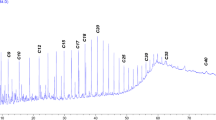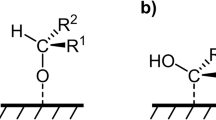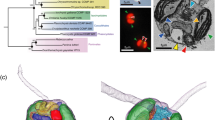Abstract
IT has been pointed out to me (J. V. Brunnock, personal communication) that the simple arithmetical explanation of even C-number predominance recently advanced2 fails if, in addition to the categories of chances of recombination previously considered, namely even–even, odd–odd, even–odd, that of odd–even is added. The probability of getting even and odd C-numbered products is then the same, and I concur. In fact, if it is assumed that four chains break up to give four even and four odd radicals, there are thirty-two chances each for the formation of even and odd chains by random coupling. Yet there can be little doubt that the predominant even C-numbered n-alkanes are derived by break-up of fatty acids and recombination of the fragments.
This is a preview of subscription content, access via your institution
Access options
Subscribe to this journal
Receive 51 print issues and online access
$199.00 per year
only $3.90 per issue
Buy this article
- Purchase on SpringerLink
- Instant access to full article PDF
Prices may be subject to local taxes which are calculated during checkout
Similar content being viewed by others
References
Brunnock, J. V., Nature, 212, 385 (1966).
Robinson, R., Nature, 212, 1291 (1966).
Purdy, S. J., and Truter, E. V., Proc. Roy. Soc., B, 158, 536, 544 (1963).
Kolattukudy, P. F., Biochemistry, 5, 2265 (1966).
Author information
Authors and Affiliations
Rights and permissions
About this article
Cite this article
ROBINSON, R. Origins of Oil, a Correction and Further Comment on the Brunnock1 Even C-Number Predominance in Certain Higher Alkanes of African Crudes, and on the Biogenesis of Nonacosane. Nature 214, 263 (1967). https://doi.org/10.1038/214263a0
Received:
Issue date:
DOI: https://doi.org/10.1038/214263a0



